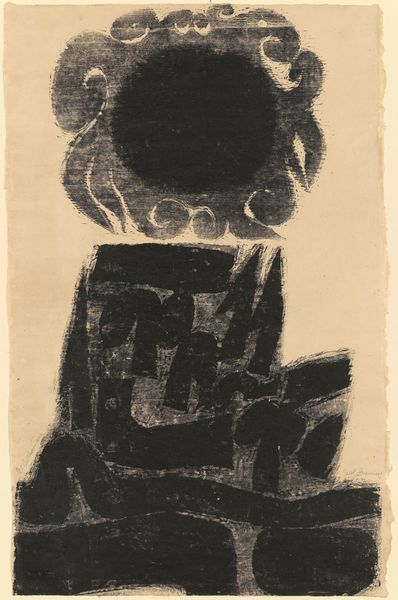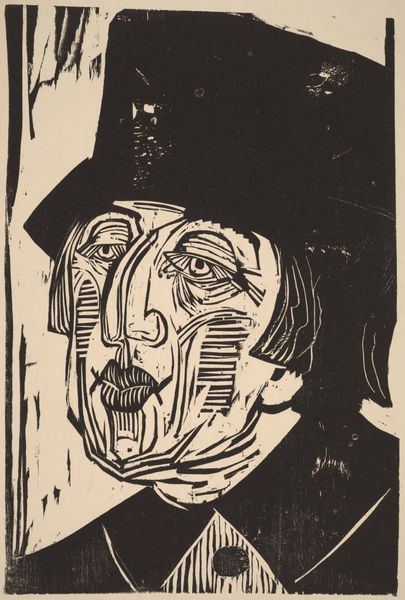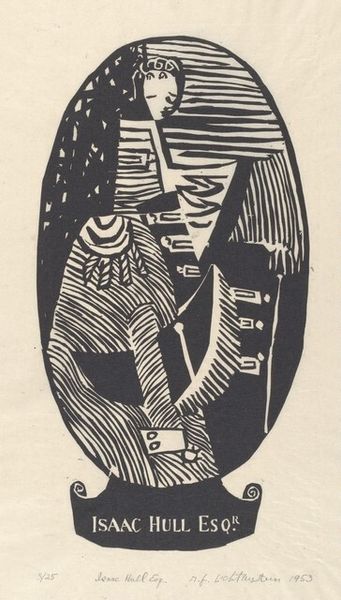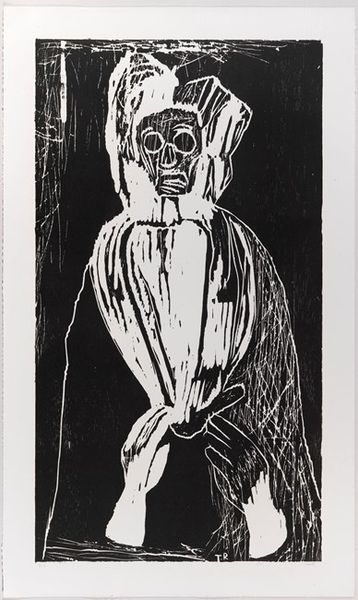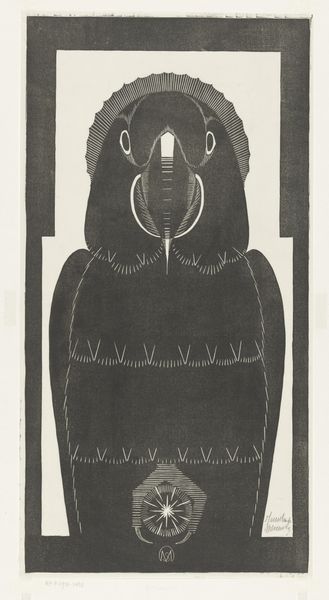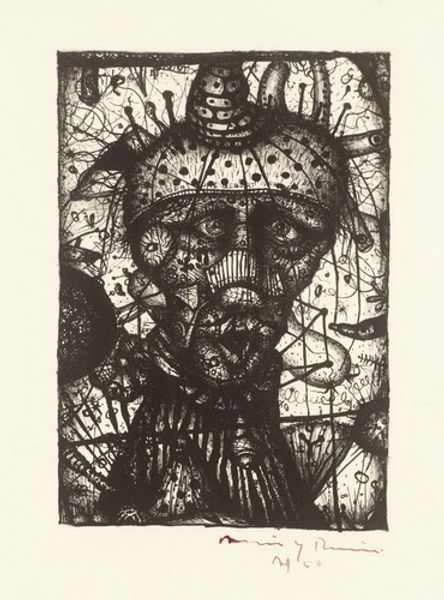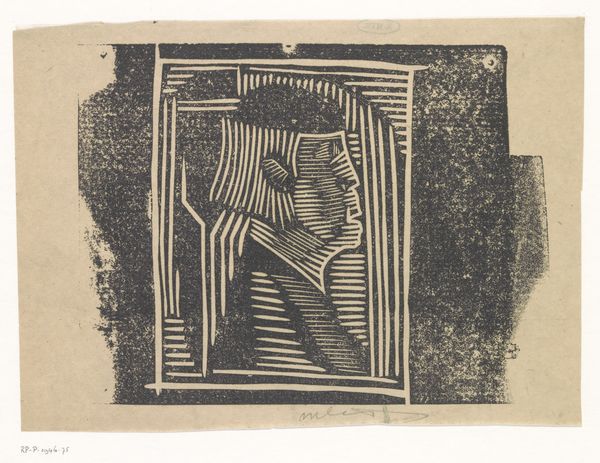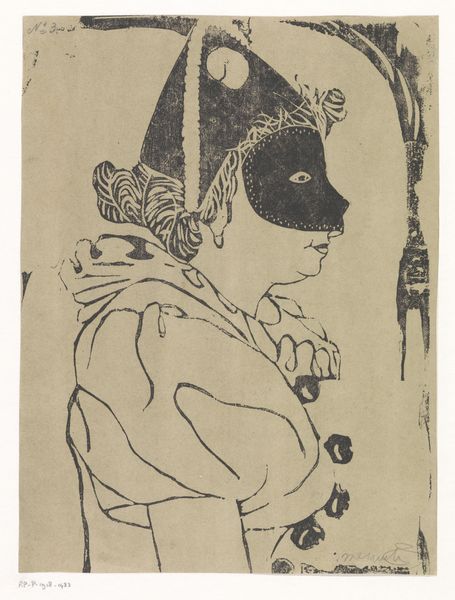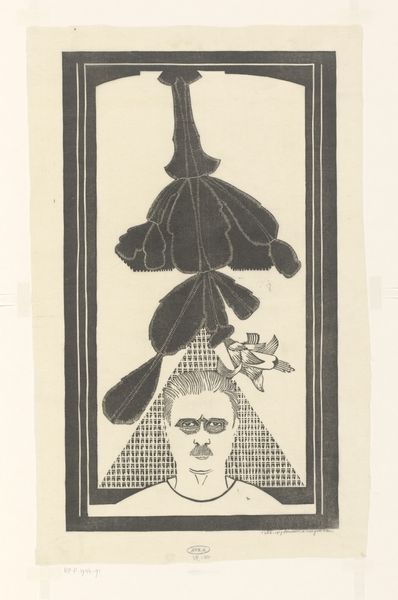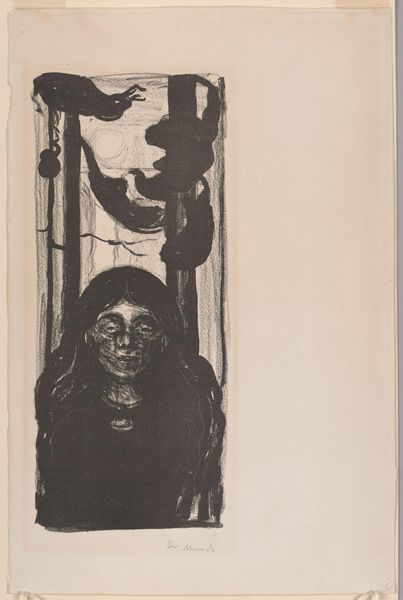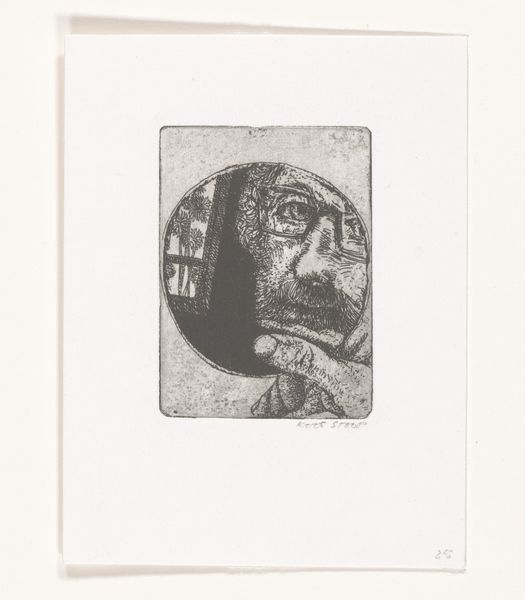
print, woodcut
# print
#
figuration
#
expressionism
#
woodcut
#
abstraction
#
line
Dimensions: height 180 mm, width 135 mm
Copyright: Rijks Museum: Open Domain
Editor: Here we have Samuel Jessurun de Mesquita's "Fantasie: kop," created in 1930. It's a striking woodcut print. The stark black and white and the abstract facial features create such a dramatic effect. What's your interpretation of this piece? Curator: As a materialist, I’m particularly interested in the woodcut technique here. Consider the labour involved, the physical act of carving away at the block. The lines, the stark contrast - they speak to a deliberate, almost aggressive engagement with the material. It is mass produced by design. How does the medium influence the reception? Editor: That's fascinating. I hadn't thought about the physicality so much. The print medium makes it reproducible and shareable by design. Curator: Exactly. It moves beyond unique preciousness, challenging the traditional art market model through accessible modes of circulation and potentially commenting on socioeconomic disparities. Does this mass production enhance the message or degrade the originality? Editor: Hmmm. I guess it democratizes the image but perhaps also reduces its perceived value. Do you think the style fits into Expressionism through its engagement with industrial printing methods? Curator: Indeed. We could see the Expressionist aesthetic—the distortion, the strong emotion—as being intrinsically linked to these material conditions of its creation. The very process becomes part of the artistic statement. Editor: So the message isn't just in the image but also in how it's made and shared. That gives me a whole new way to look at prints. Curator: Precisely! Considering the intersection of materials, labor, and social context unlocks another dimension to art historical examination.
Comments
No comments
Be the first to comment and join the conversation on the ultimate creative platform.
